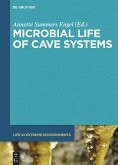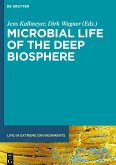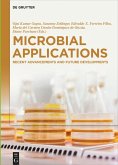Today's microorganisms represent the vast majority of biodiversity on Earth and have survived nearly 4 billion years of evolutionary change. However, we still know little about the processes of evolution as applied to microorganisms and microbial populations. Microbial evolution occurred and continues to take place in a vast variety of environmental conditions that range from anoxic to oxic, from hot to cold, from free-living to symbiotic, etc. Some of these physicochemical conditions are considered "extreme", particularly when inhabitants are limited to microorganisms. It is easy to imagine that microbial life in extreme environments is somehow more constrained and perhaps subjected to different evolutionary pressures. But what do we actually know about microbial evolution under extreme conditions and how can we apply that knowledge to other conditions? Appealingly, extreme environments with their relatively limited numbers of inhabitants can serve as good model systems for the study of evolutionary processes.
A look at the microbial inhabitants of today's extreme environments provides a snapshot in time of evolution and adaptation to extreme conditions. These adaptations manifest at different levels from established communities and species to genome content and changes in specific genes that result in altered function or gene expression. But as a recent (2011) report from the American Academy of Microbiology observes: "A complex issue in the study of microbial evolution is unraveling the process of evolution from that of adaptation. In many cases, microbes have the capacity to adapt to various environmental changes by changing gene expression or community composition as opposed to having to evolve entirely new capabilities." We have learned much about how microbes are adapted to extreme conditions but relatively little is known about these adaptations evolved. How did the different processes of evolution such as mutation, immigration, horizontal (lateral) gene transfer, recombination, hybridization, genetic drift, fixation, positive and negative selection, and selective screens contribute to the evolution of these genes, genomes, microbial species, communities, and functions? What are typical rates of these processes? How prevalent are each of these processes under different conditions?
This book explores the current state of knowledge about microbial evolution under extreme conditions and addresses the following questions: What is known about the processes of microbial evolution (mechanisms, rates, etc.) under extreme conditions? Can this knowledge be applied to other systems and what is the broader relevance? What remains unknown and requires future research? These questions will be addressed from several perspectives including different extreme environments, specific organisms, and specific evolutionary processes.
A look at the microbial inhabitants of today's extreme environments provides a snapshot in time of evolution and adaptation to extreme conditions. These adaptations manifest at different levels from established communities and species to genome content and changes in specific genes that result in altered function or gene expression. But as a recent (2011) report from the American Academy of Microbiology observes: "A complex issue in the study of microbial evolution is unraveling the process of evolution from that of adaptation. In many cases, microbes have the capacity to adapt to various environmental changes by changing gene expression or community composition as opposed to having to evolve entirely new capabilities." We have learned much about how microbes are adapted to extreme conditions but relatively little is known about these adaptations evolved. How did the different processes of evolution such as mutation, immigration, horizontal (lateral) gene transfer, recombination, hybridization, genetic drift, fixation, positive and negative selection, and selective screens contribute to the evolution of these genes, genomes, microbial species, communities, and functions? What are typical rates of these processes? How prevalent are each of these processes under different conditions?
This book explores the current state of knowledge about microbial evolution under extreme conditions and addresses the following questions: What is known about the processes of microbial evolution (mechanisms, rates, etc.) under extreme conditions? Can this knowledge be applied to other systems and what is the broader relevance? What remains unknown and requires future research? These questions will be addressed from several perspectives including different extreme environments, specific organisms, and specific evolutionary processes.








